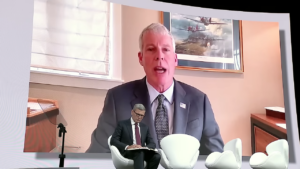Advanced waste treatment systems could divert more than 95 per cent of Sydney’s household waste from landfill and convert it into a renewable gas to power, heat and cool buildings, a plan drafted by the City of Sydney has found.
The City’s draft advanced waste treatment master plan, approved by council on Monday, shows how energy can be generated from household waste, reducing the loss of valuable resources to landfill and cutting Sydney’s greenhouse gas emissions.
The plan, which is open to public scrutiny from May 15 to June 25, aims to divert non-recyclable waste from landfill and convert it into renewable and non-fossil fuel gases, and convert these gases into substitute natural gases to inject into the gas grid as a cheaper and more efficientlow-carbon energy source.
This process would be be carried out in advanced waste treatment plants, using a chemical process that the City says would have minimal emissions and would need to comply with the NSW Energy from Waste policy.
Lord Mayor Clover Moore said the new, but viable technology could prevent around 196,000 tonnes of greenhouse gas emissions a year, and save ratepayers about $3.9 million a year by avoiding the waste levy costs of landfill of more than $100 per tonne.
“Currently over 40,000 tonnes of household rubbish a year is processed to remove recyclables and produce low-grade compost,” Moore said, “but one third of waste still goes to landfill. The advanced waste treatment plant could reduce this amount to virtually nothing.
“If we don’t try to reduce our waste, by 2030 the household waste of city residents is predicted to grow to 80,000 tonnes. This means after recycling and treatment, 27,000 tonnes of non-recyclable household waste would end up in landfill – equivalent to the weight of a cruise ship.”
Moore said that energy from waste technologies already played a vital role internationally, with advanced waste technologies in use across Europe, Asia and North America. Australia, as one of the world’s top three producers of waste per capita, should follow suit, she said.
Just north of Sydney, the ACT already operates a 3MW facility that generates electricity from landfill gas, andis now looking to offer feed-in tariffs for up to 23MW of waste-to-energy power plants as part of its plans to source 90 per cent of its electicity needs from renewables by 2020.
ACT minister for environment Simon Corbell told RenewEconomy in April that his government had already run an “expressions of interest” program on the waste to energy plant proposal, and expected to go to market in 2015 for the technology, which he says will be cost effective.
In NSW, under the state’s current regulatory environment, advanced waste treatment can be effectively used to deliver renewable gas straight to the grid – a substitute for natural that gas can be used for electricity generation, heating, cooking and air-conditioning. This system would also designed to fully integrate with any future trigeneration plants to produce clean, local electricity, heating and cooling.










